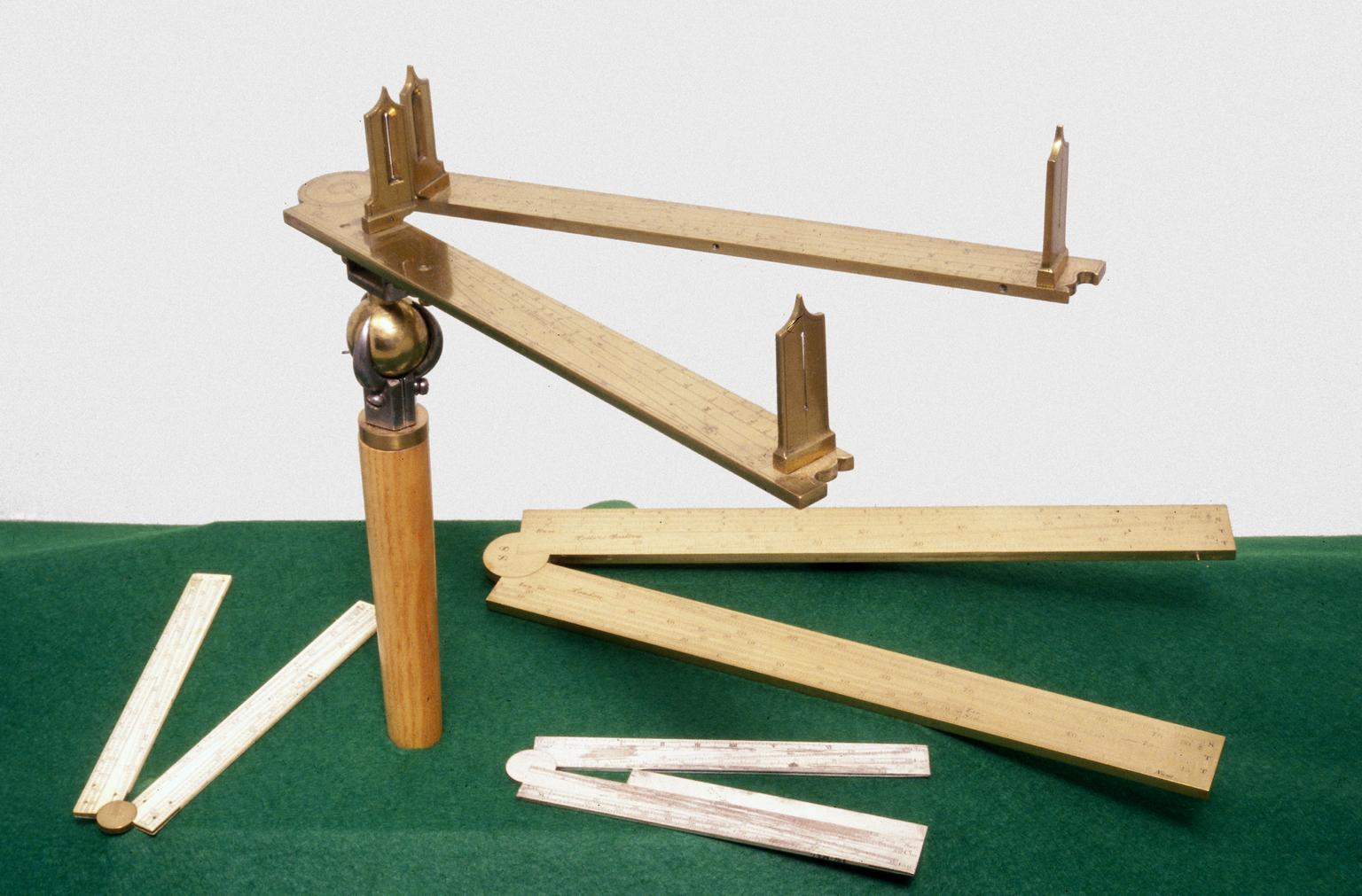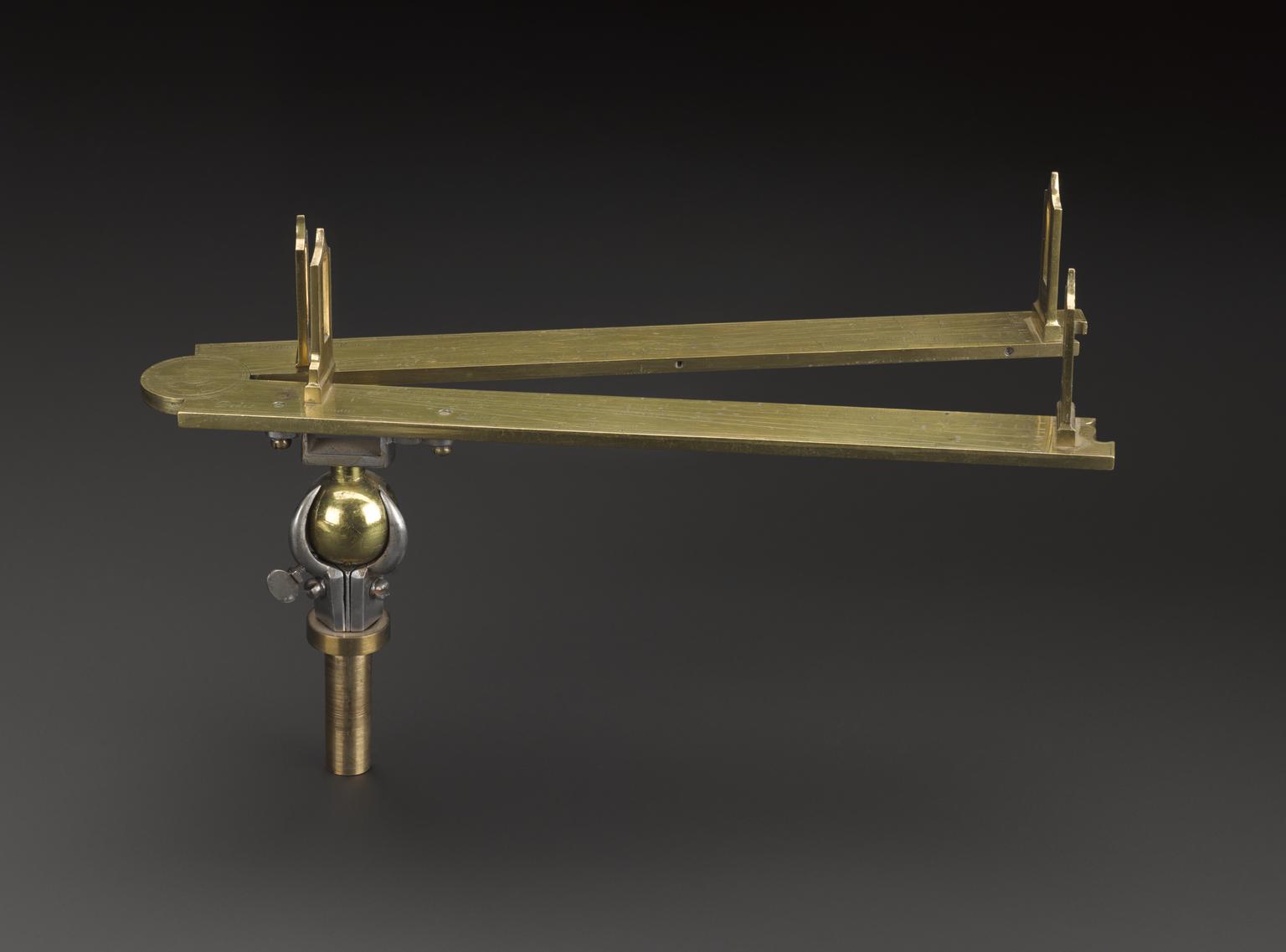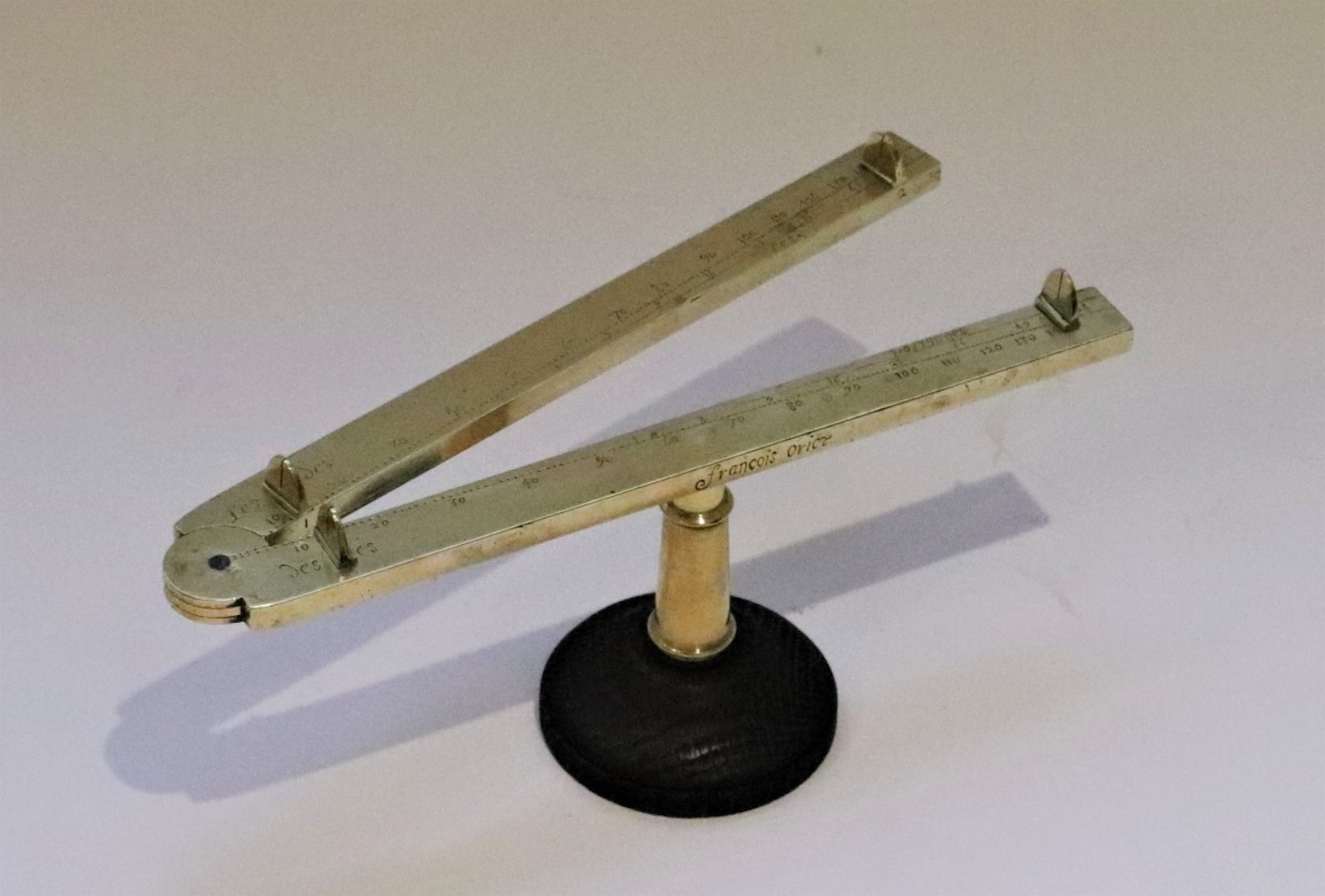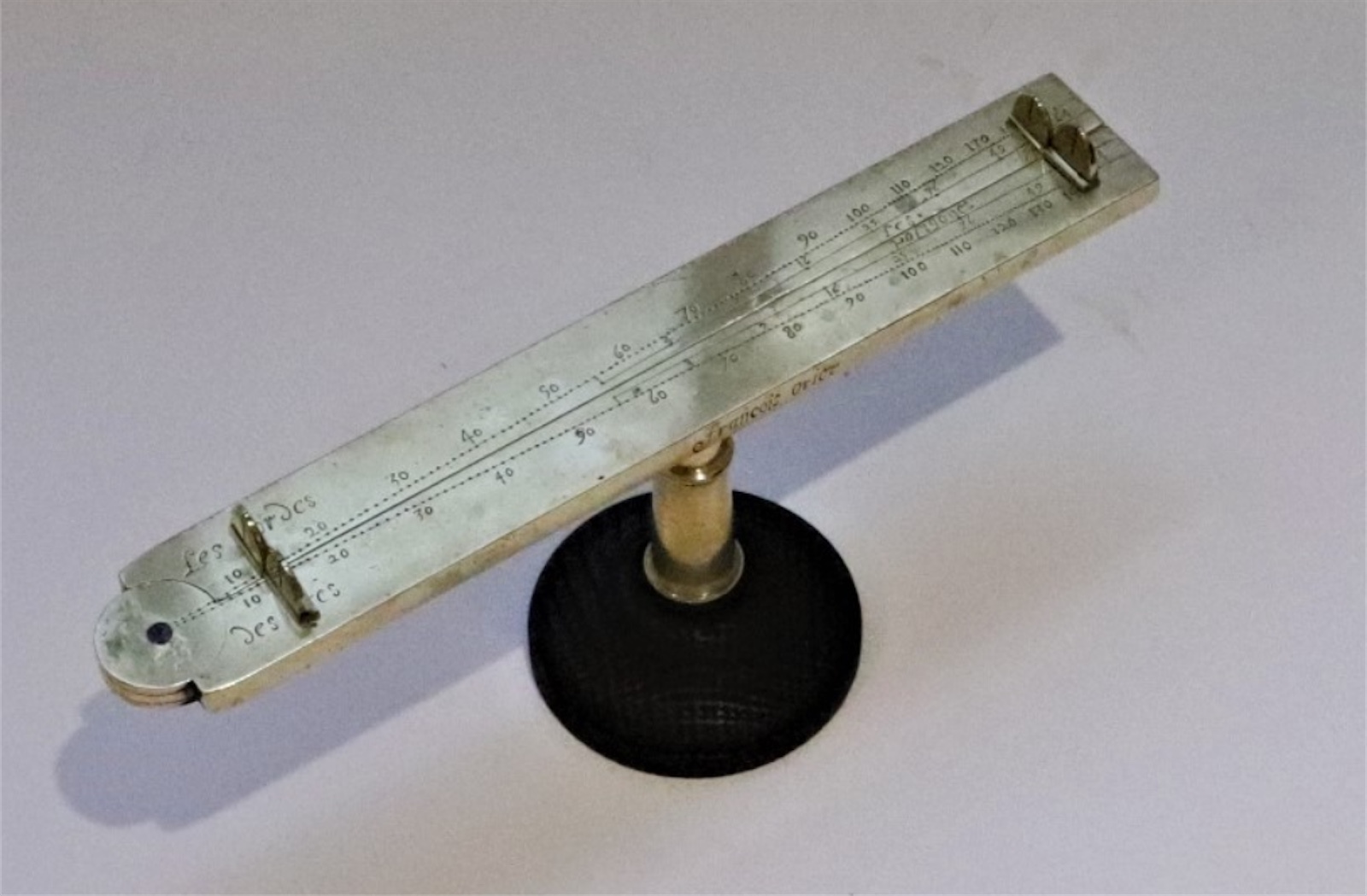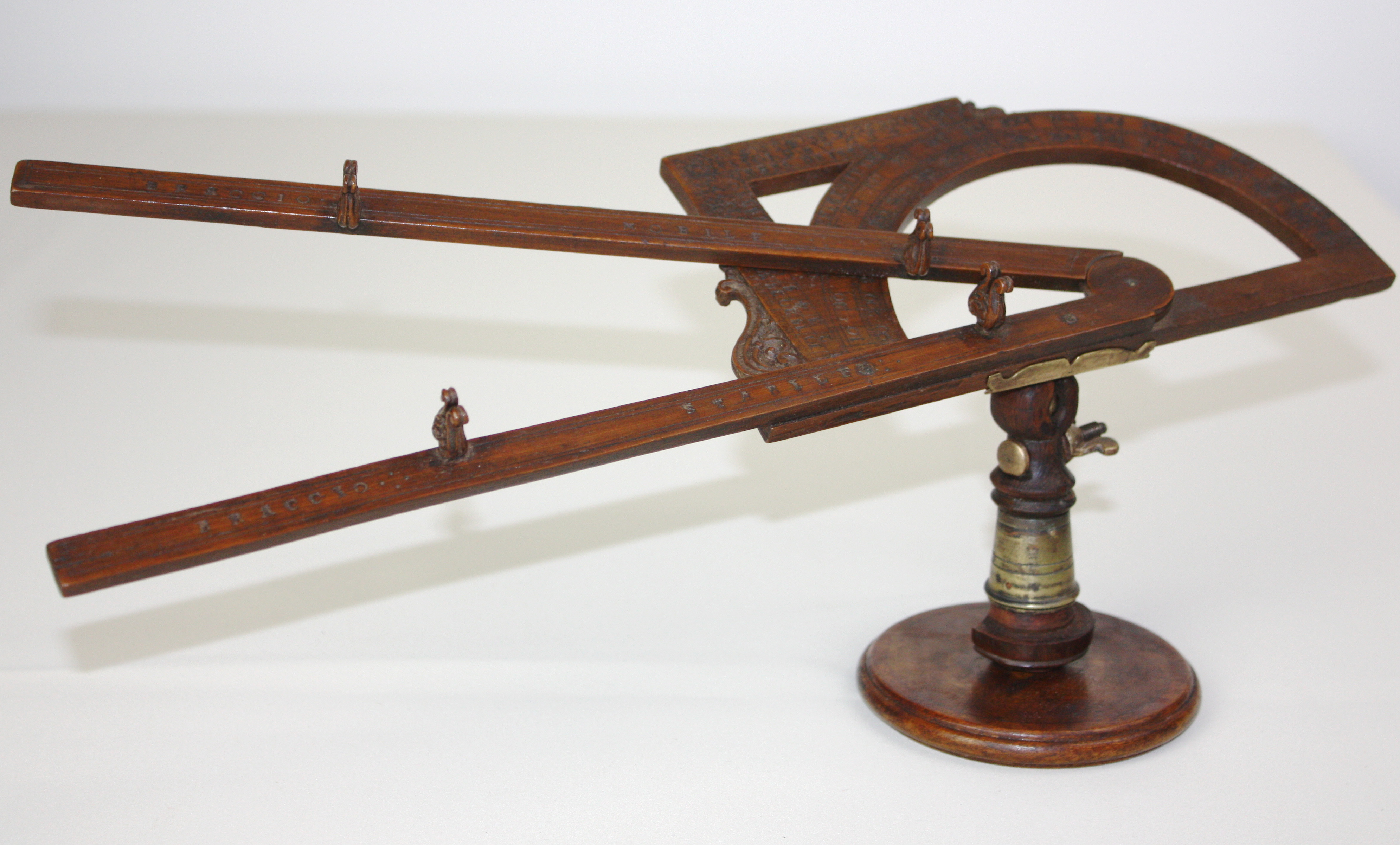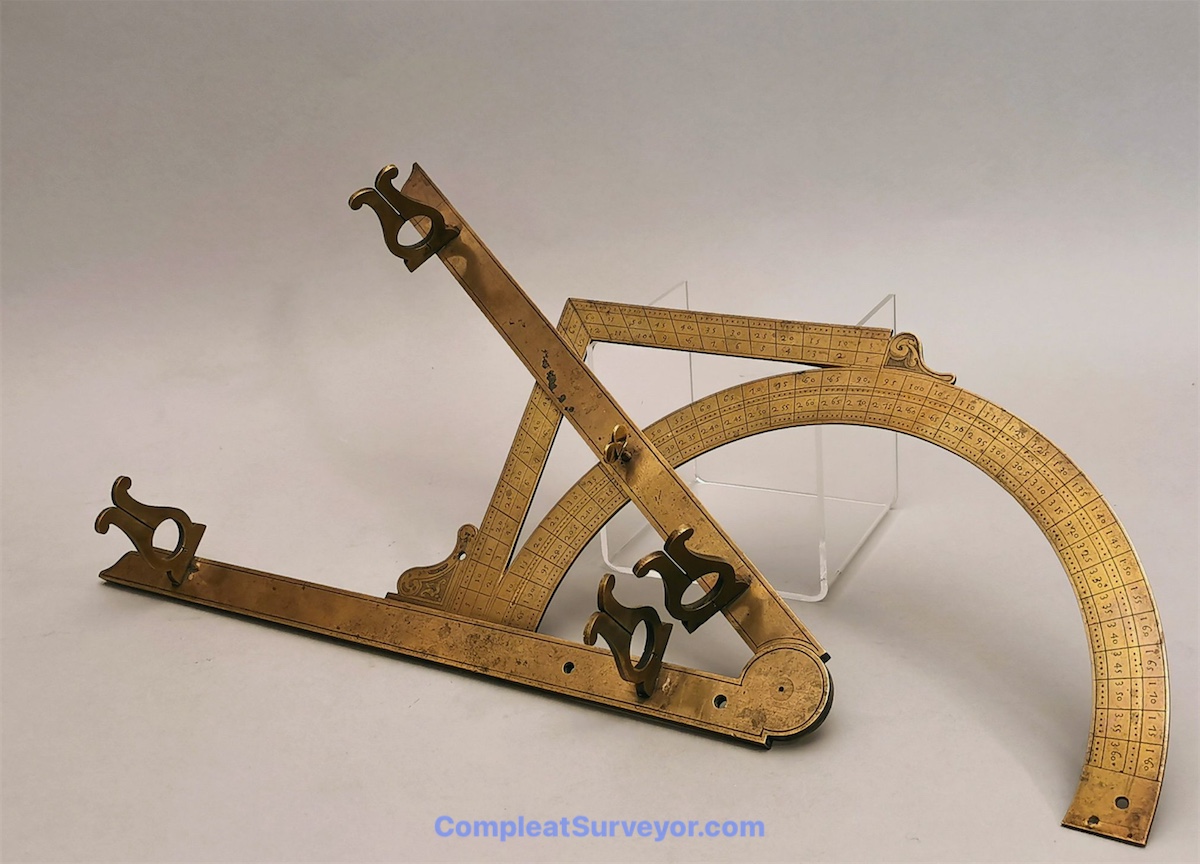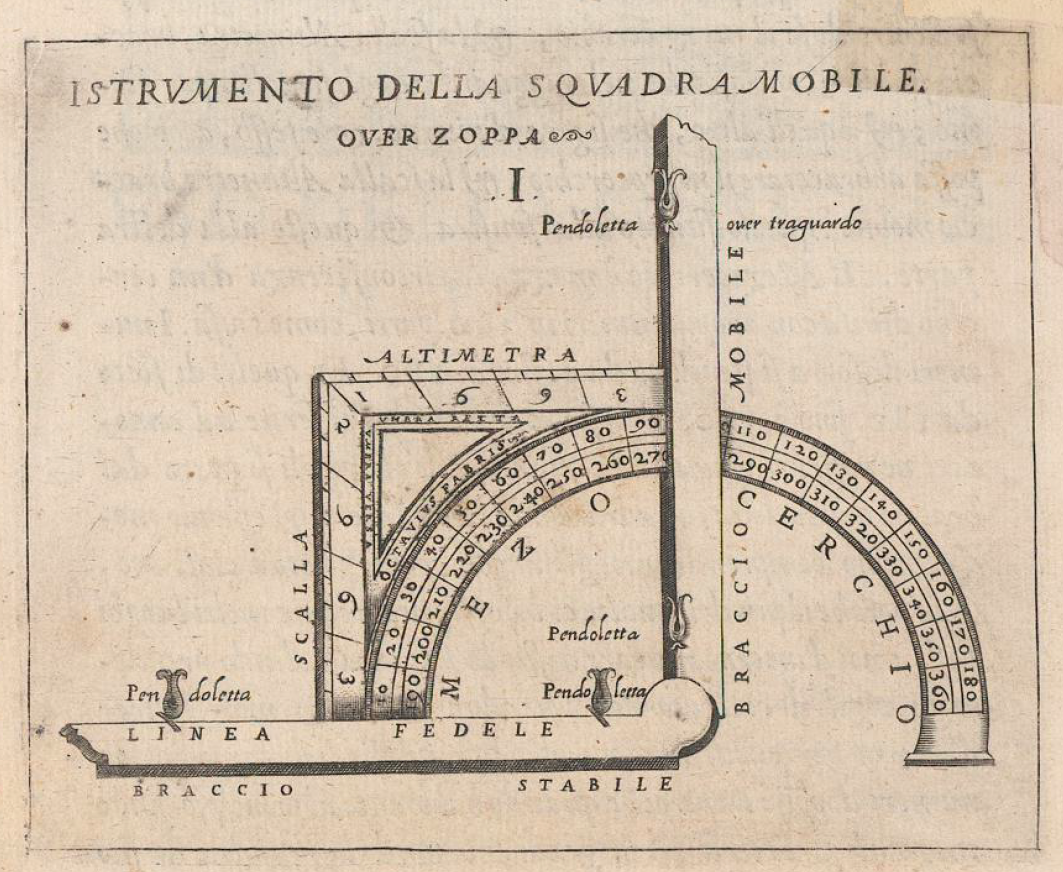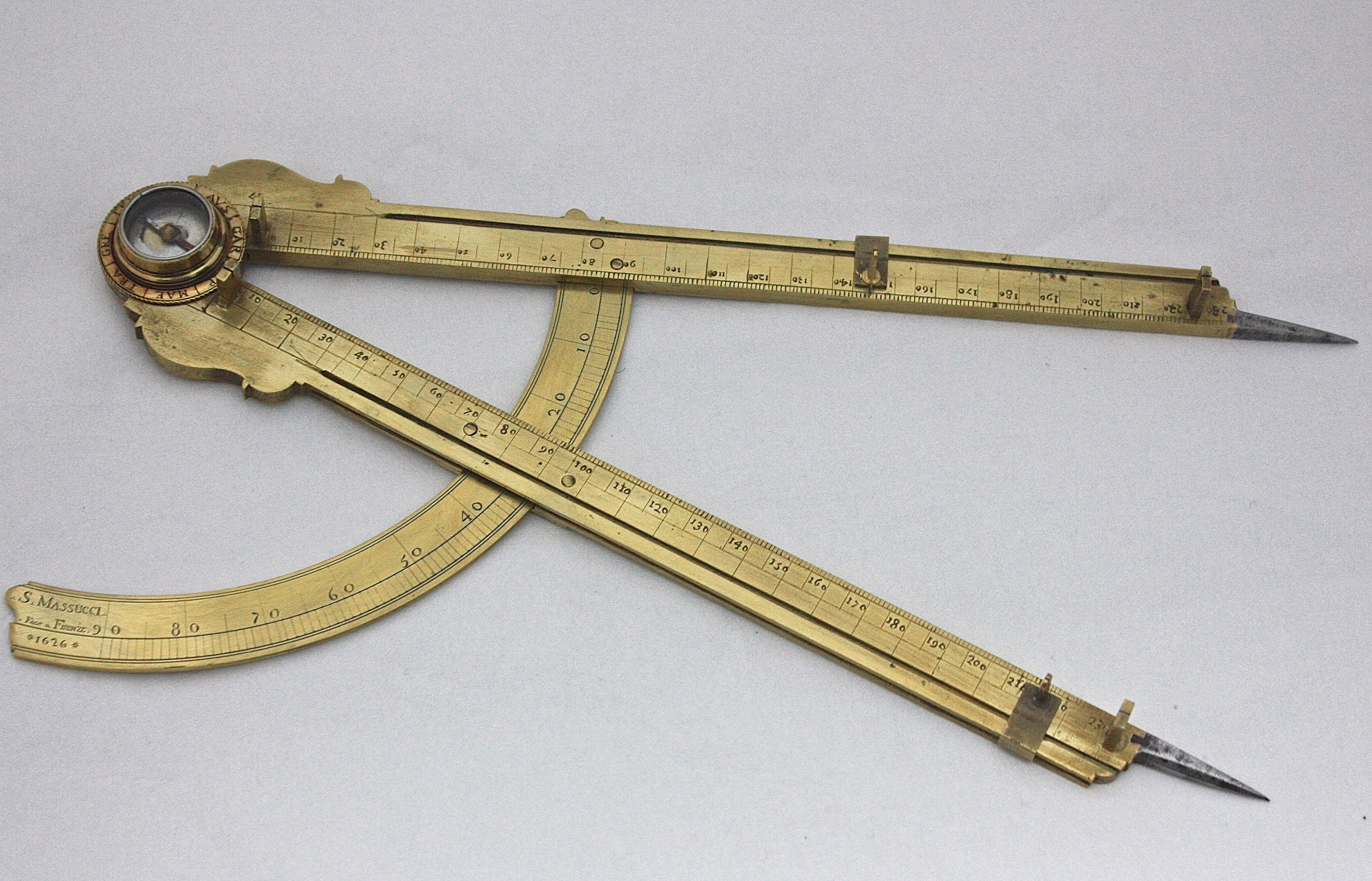
Beautiful Surveying Sector Dates 1626 - In a Private Collection
Surveying Sectors
Sectors, rules, scales and compasses were useful tools to surveyors and other practitioners of the mathematical arts. But these tools were used by surveyors largely to assist in platting and map-making.
The sector I'm focused on here is a Surveying or Surveyor's Sector. These specialized sectors were Surveying Instruments - they had small sight vanes installed and oftentimes had arcs for measuring an angle in degrees. They also had mounting sockets. Thomas Hood first published a book illustrating the Surveying Sector in 1598.
I don't think Surveying Sectors were used very much because you don't see many in private collections or Museums. But they did seem to have a small marketshare in the 1600 to 1700 time frame.
The Squadra Mobile
Fabri invented the Square Mobile in the 16th century - see his 1598 book posted in PDF form below. This is a cool but hard to categorize instrument. It's more sophisticated than a Surveying Sector, but it doesn't fall into any other category neatly. Fabri saw it as a multi-use instrument - it could measure horizontal angles and since it had a shadow box it could measure heights as well. While likely produced in some quantity in Italy, the Squadra never really caught on outside Italy and probably didn't last much past 1700 or so.
Collectability
Surveying Sectors and Squadra Mobiles are cool instruments but not produce in high quantities. So they don't come up for sale very often. They had very small marketshare even when they were being produced. Still, they are a nice collectible if you come across one at a decent price. If you find one, check the sight vanes for originality very closely, especially on the sectors. I understand that the very small sight vanes had a high attrition rate not surprisingly.
Important Books - Crosses
Below are some of the important books related to Surveyor Crosses.
The 1982 Whipple Catalogue "The Compleat Surveyor" has a short write-up on Crosses. You can read the write-up here.
Bion's 1709 book includes a diagram of a Surveyor's Cross and a relatively brief discussion. You can see Stone's 1723 English translation of Bion's book below. The diagram in Bion's box looks very much like the pic of the one I have at the top of this page.
Finally, Adam's 1797 book contains a plate showing several different kinds of Surveyor's Crosses, and included a good write-up on how to use a Surveyor's Cross. The attached Adams PDF also claims that surveyor's who are using a chain to survey are also very likely to be using a Surveyor's Cross at the same time.
Thomas Hood's Sector (1598)

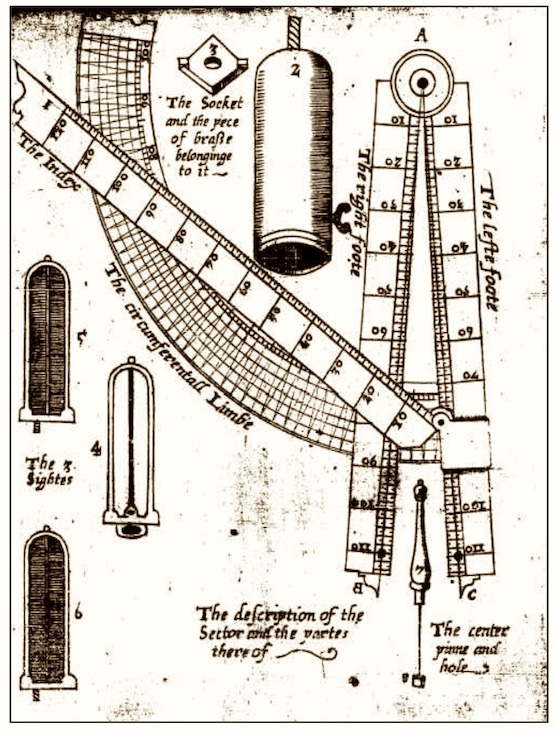
My Reference Materials
Here are the main reference books I used while researching my Ancient Surveying Webpages:
5-Volume Catalogue Of The Most Important Worldwide Private Collection Of Scientific Instruments (With 928 Color Illustrations). Written in German, but an amazing reference tool. The pictures are incredible - most of the instruments are not found on the internet. Crazy Expensive.
Bennett's Catalogue of Surveying and Related Instruments (2022). Fantastic pics and info about the surveying related instruments at the Galileo Museum (which has an INCREDIBLE collection of early instruments).
Bennett's The Divided Circle (1987). A History of Astronomy, Navigation and Surveying Instruments.
Delalande Antiques Two Volume book series on Astrolabes. The two volumes walk you thru how to use and collect Astrolabes. A must have if you want to collect Astrolabes.
Kiely's Surveying Instruments - Their History (1947) Somewhat dated now, but still has a great deal of relevant information. Not the easiest read, however.
Daumas' Scientific Instruments of the 17th and 18th Centuries (Translated into English 1972).
Richeson's English Land Measuring to 1800 (1966). A nice book that is mis-paginated unfortunately. But still contains some good information about early English land surveying.
Important Websites where you can use the search function (e.g. "Theodolite") to find instruments:
The Museo Galileo Virtual Museum - A Stunning Collection of Early Surveying Instruments
The Science Museum Group (UK Based)
Harvard University Collection of Scientific Instruments
The Museum of History and Science, Oxford
© 2020 Russ Uzes/Contact Me
